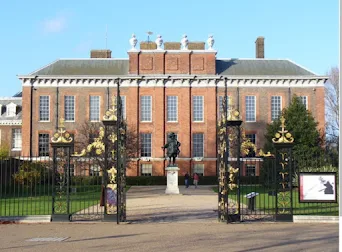Kensington Palace: An Ancient Royal Mansion
History
Nottingham House, a Jacobean palace constructed in 1605, was the original name of Kensington Palace. Since Kensington offered fresher air than Whitehall Palace, King William III and Queen Mary II bought it in 1689 as a better place to live because William had asthma. With the assistance of Sir Christopher Wren, they enlarged it and turned it into a royal residence.
Throughout the Centuries, Royal Residents
18th Century: The gardens were enhanced and the Orangery was erected by Queen Anne. It underwent additional architectural modifications during the reigns of King George I and King George II
19th Century: The rigid "Kensington System," which was enforced by her mother and advisor, was followed by Queen Victoria throughout her birth and upbringing at Kensington Palace. When she became queen in 1837, she convened her first meeting of the privy council there.
The palace continued to serve as a royal house in the 20th and 21st centuries, housing individuals such as Princess Margaret and, subsequently, Prince Charles and Princess Diana. After her divorce, Diana stayed there until her death in 1997. The Prince and Princess of Wales (William and Catherine) as well as other royals now call it home.
Exhibitions & Public Access
The following areas of Kensington Palace are accessible to the public:
The State Apartments of the King and Queen
The exhibit Victoria: A Royal Childhood
The previously exhibited Diana: Her Fashion Story exhibit
A statue of Princess Diana was unveiled in the Sunken Garden in 2021.
Architectural Elements
The palace's magnificent red-brick facades, tasteful gardens, and stately interiors combine Baroque and Georgian architectural elements.
Cultural Importance
As the home of the contemporary royal family and a significant part of the lives of numerous monarchs, Kensington Palace is a representation of British royal heritage. It is still a popular historical landmark and tourist destination.
Tags
Biography

